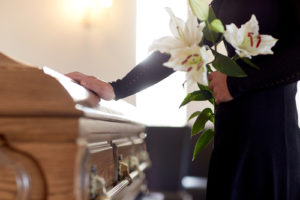 Accidents are not uncommon in New York. Sadly, neither are crimes and acts of violence. When someone’s negligence or wrongful conduct results in someone else’s death, the decedent’s grieving family members often file a wrongful death suit against the person and/or entity they believe is responsible for their loved one’s death.
Accidents are not uncommon in New York. Sadly, neither are crimes and acts of violence. When someone’s negligence or wrongful conduct results in someone else’s death, the decedent’s grieving family members often file a wrongful death suit against the person and/or entity they believe is responsible for their loved one’s death.
As FindLaw explains, wrongful death actions are governed by Section 5-4.1 of New York’s Estates, Powers and Trusts Law. Under this law, only the person appointed as the personal representative of the decedent’s estate can bring the lawsuit. If he or she prevails in the suit, the money damages received become part of the decedent’s estate and are distributed to his or her surviving family members who suffered losses due to the decedent’s wrongful death.
A wrongful death action, often stemming from a severe Personal injury, can arise out of a variety of circumstances, including the following:
- Auto and other vehicular accidents
- Workplace accidents
- Medical malpractice
- Nursing home abuse or neglect
- Defective product accidents
- Slip-and-fall accidents
- Murder or other forms of homicide
- Spousal abuse
- Gun crimes
Statute of Limitations
In New York, a wrongful death action based on negligence of the responsible party must be brought within two years of the decedent’s death. If the death resulted from someone’s criminal act, however, and that person was charged with a crime, the civil wrongful death action may be brought within one year after the criminal action terminates, whether or not the defendant was found guilty and whether or not such termination was within two years of the decedent’s death.
It is important to note that in a criminal prosecution, the State must prove beyond a reasonable doubt that the defendant committed the crime(s) with which he or she is charged. In a wrongful death suit, however, the burden of proof is lower. The plaintiff must prove by a preponderance of the evidence that the defendant was responsible for the decedent’s death.
Thus it is not uncommon for a defendant who was found not guilty of the decedent’s death in a criminal case to be found responsible for it in a subsequent civil wrongful death suit. The classic example is that of O.J. Simpson’s “trial of the century” in 1994. The criminal case jury found Mr. Simpson not guilty of killing his wife, Nicole Brown Simpson, and her friend Ronald Goldman. Mr. Simpson nevertheless was held liable for their deaths in the subsequent wrongful death suit and was ordered to pay $33.5 million to the victims’ families.
Wrongful Death Elements
Most wrongful death suits are based on the theory of negligence on the part of the person and/or entity alleged to be responsible for the decedent’s death. Per the New York City Bar, the plaintiff in such a case must be able to prove the following four things:
- That the defendant acted negligently
- That the defendant’s negligence caused the death of the deceased person
- That the decedent has a surviving spouse, children, or other dependents and/or beneficiaries of his or her estate
- That the decedent’s survivors suffered economic damage as a result of the decedent’s death
Recoverable Damages
The decedent’s estate may recover damages for the economic losses suffered by the decedent’s survivors and for the decedent’s own pain and suffering prior to his or her death. Such damages can include the following:
- Cost of the decedent’s medical expenses prior to his or her death
- Cost of the decedent’s funeral expenses
- The reasonable value of the decedent’s lost earnings between the time he or she was injured and the time of his or her death
- The value of the survivors’ loss of the decedent’s support and services
- The value of the decedent’s children’s loss of their parent’s nurturing, guidance and the education he or she would have been expected to provide them
If the defendant(s) can be shown to have acted in a particularly egregious manner, the plaintiff also may be able to recover punitive damages; i.e., damages above and beyond economic losses that are awarded to punish the defendant.
Medical Malpractice Wrongful Death Suits
A wrongful death action based on the alleged negligence of a health care provider can be filed against a variety of people and/or entities, including the following:
- Physicians and physician assistants
- Nurses and nurse practitioners
- Dentists
- Therapists, both physical and occupational
- Lab and x-ray technicians
- Pharmacists
- Hospitals and clinics
- Nursing homes
One of the main things that the plaintiff must prove in such a case is that the person and/or entity provided a level of care that was below the accepted standard that would be expected of a similar person or entity similarly situated.
While nothing can make up for losing a loved one, prevailing in a wrongful death action can provide surviving family members with badly needed funds. It also can give them a sense of closure after their loved one’s death.
